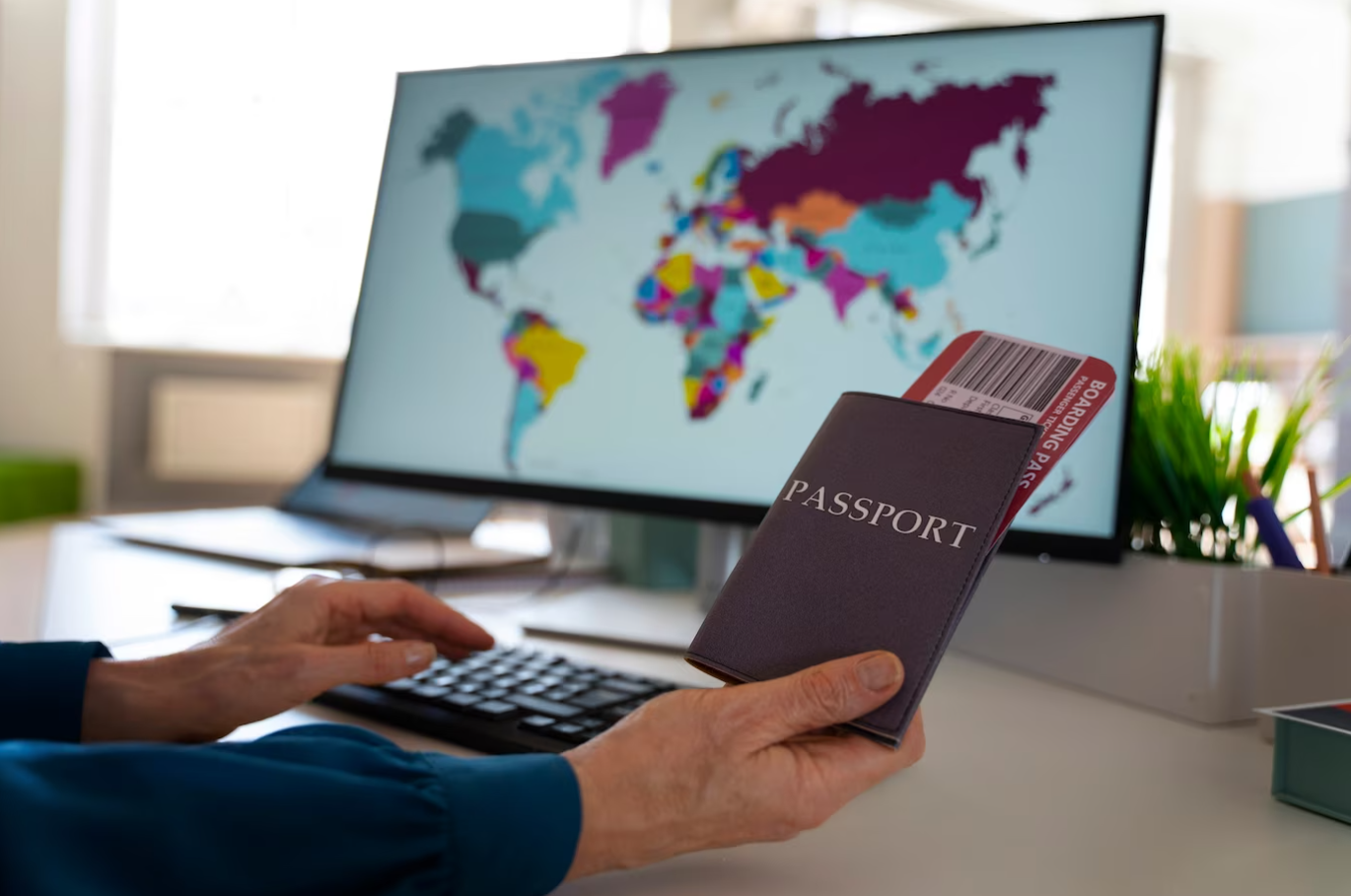In an age of digital mobility, our passports and visas serve as miniature gateways to the world. Yet, nestled within these official documents lies a seemingly mundane element with an outsized impact: the photo. Often relegated to a quick snapshot against a white backdrop, passport and visa photos can unwittingly hold the power to grant or deny access to our international aspirations. But beyond bureaucratic hurdles, the quality of these photos’ matters for a more fundamental reason: it shapes the first impression we make on foreign officials, potentially influencing their perception of our trustworthiness and intentions. In this article, we’ll delve into the often-overlooked realm of passport and visa photography, exploring why meticulous attention to detail, from proper lighting and attire to facial expressions and background choices, can make a critical difference in our global journeys.
The Importance of Passport and Visa Photos:
The significance of passport and visa photos extends beyond the mere necessity of having a recognizable image on travel documents. These photos serve as a critical layer of security and identification, aiding authorities in verifying the identity of travelers at border control checkpoints. In an era where security concerns are paramount, these images play a pivotal role in preventing identity fraud and ensuring the safety of international travel.
One of the primary functions of passport and visa photos is to establish a direct link between the individual and their travel documents. The standardized nature of these photos allows for quick and efficient verification by border control officers, helping to maintain the integrity of immigration and security systems. Consistent adherence to guidelines regarding photo quality, background, and facial expression contributes to the overall reliability of these identification processes.
Moreover, passport and visa photos play a crucial role in international cooperation and information sharing among countries. Standardized photo requirements facilitate the exchange of travel data and enhance collaboration in matters of border security. This interconnected approach is particularly vital in the context of global efforts to combat transnational crime, terrorism, and illegal immigration.
Beyond security considerations, the importance of these photos also lies in the facilitation of diplomatic and consular services. Embassies and consulates utilize these images to process visa applications and provide assistance to citizens abroad. A clear and accurate representation of the individual ensures smooth communication and cooperation between countries, contributing to the overall efficiency of international relations.
In essence, passport and visa photos serve as a fundamental aspect of the modern travel infrastructure. Their adherence to standardized guidelines not only ensures the security of international borders but also facilitates the seamless movement of individuals across countries. Recognizing the broader implications of these photos underscores their importance in the larger framework of global travel and security.
Common Mistakes When Taking Passport and Visa Photos
While the requirement for passport and visa photos may seem straightforward, numerous common mistakes can compromise the quality and compliance of these images. Recognizing and avoiding these pitfalls is crucial to prevent delays and ensure a smooth application process. Here are some of the most common mistakes:
- Improper Lighting: Insufficient or uneven lighting can cast shadows on the face or result in overexposed images. Ensure even, natural lighting without harsh shadows. Avoid using a flash that can create reflections or distort facial features.
- Incorrect Facial Expressions: Smiling, frowning, or making exaggerated facial expressions is generally discouraged in passport and visa photos. Maintain a neutral and relaxed expression. Follow guidelines that specify the acceptable range of facial expressions.
- Inadequate Resolution: Low-resolution photos may not meet the required standards, leading to pixelation and potential rejection. Use a high-resolution camera or smartphone camera capable of capturing clear and detailed images. Ensure the final image meets the specified resolution guidelines.
- Background Color and Pattern: Choosing a background that does not comply with guidelines, such as a patterned or dark background, can result in rejection. Opt for a plain, light-colored background that provides sufficient contrast with the subject’s face. Check and adhere to specific requirements regarding background color.
- Incorrect Head Positioning: Tilting or turning the head inappropriately may lead to rejection, as many guidelines specify a straight-on view. Position the head straight and face the camera directly. Follow any guidelines regarding head tilt or angle.
| Common Mistake | Issue | Solution |
| Improper Lighting | Uneven lighting, shadows, or overexposure | Ensure even, natural lighting; avoid harsh shadows and flash. |
| Incorrect Facial Expressions | Smiling or exaggerated expressions | Maintain a neutral and relaxed expression. |
| Inadequate Resolution | Low-resolution photos | Use a high-resolution camera; adhere to specified guidelines. |
| Background Color and Pattern | Non-compliance with background guidelines | Choose a plain, light-colored background. |
| Incorrect Head Positioning | Tilting or turning the head inappropriately | Position the head straight and face the camera directly. |
Consequences of Poor Quality Passport and Visa Photos:
The repercussions of submitting passport and visa photos that fall short of the required standards extend far beyond the initial inconvenience of a rejected application. Poor-quality photos can have significant consequences, creating hurdles in the travel process and causing frustration for applicants.
When authorities identify photos that do not adhere to the specified guidelines, applications are commonly rejected. This rejection triggers a series of complications, including the need for resubmission and potential delays in the issuance of travel documents. Individuals are forced to navigate bureaucratic processes, invest additional time, and, in some cases, incur extra expenses to rectify the oversight.
Moreover, the rejection of applications based on photo quality can lead to last-minute disruptions in travel plans. Denied entry at border checkpoints due to non-compliance with photo standards can result in missed flights, canceled reservations, and unexpected expenses for rearranging travel itineraries. Such incidents not only cause stress for the affected individuals but also contribute to the overall inefficiency of the travel infrastructure.
Beyond the immediate consequences for individual travelers, the collective impact of poor-quality photos resonates on a broader scale. Governments and immigration authorities rely on standardized photo requirements to maintain the security and integrity of border control systems. Any deviation from these standards compromises the effectiveness of these systems, potentially exposing vulnerabilities that could be exploited by individuals with malicious intent.
In essence, the consequences of submitting poor-quality passport and visa photos transcend the individual level, affecting both the efficiency of travel processes and the overall security measures implemented by countries. Recognizing the importance of adhering to guidelines and ensuring photo quality becomes imperative in fostering a secure and streamlined international travel experience for all.
Impact on Travel Plans
The impact of poor-quality passport and visa photos on travel plans cannot be overstated, as these images are integral to the seamless execution of international journeys. A variety of consequences may unfold when travelers overlook the significance of submitting photos that meet stringent standards.
One of the most immediate effects is the potential delay in the processing of travel documents. When submitted photos are deemed unacceptable, authorities typically reject the application, initiating a cycle of resubmission. This delay can lead to a domino effect, causing individuals to miss their intended departure dates and experience disruptions in their carefully planned itineraries.
Denied entry at border control checkpoints due to non-compliance with photo requirements is another significant consequence. This scenario can result in travelers being turned away, facing additional scrutiny, or even being temporarily detained. Such encounters not only induce stress and anxiety for the affected individuals but also have broader implications for border security and immigration processes.
The rejection of applications and subsequent delays can also lead to financial implications. Individuals may find themselves compelled to rebook flights, rearrange accommodations, or incur fees associated with resubmitting applications. These unforeseen expenses add an unwelcome financial burden to the already complex process of international travel.
In some cases, travelers may need to reschedule or cancel planned activities, tours, or meetings, affecting both personal and professional aspects of their journeys. This disruption can be particularly frustrating for those on tight schedules or with non-refundable bookings.
Furthermore, the impact on travel plans extends beyond the individual traveler. Families, groups, or business associates planning to travel together may face coordination challenges when one member encounters delays or complications due to inadequate photo quality. This underscores the collective responsibility of ensuring that all individuals involved in a travel party adhere to the established photo standards.
In summary, the consequences of poor-quality passport and visa photos have a cascading effect on travel plans, ranging from delays and financial burdens to potential disruptions in the overall travel experience. Recognizing the critical role that these photos play in the international travel process is essential for minimizing such repercussions and ensuring a smoother journey for all travelers.

